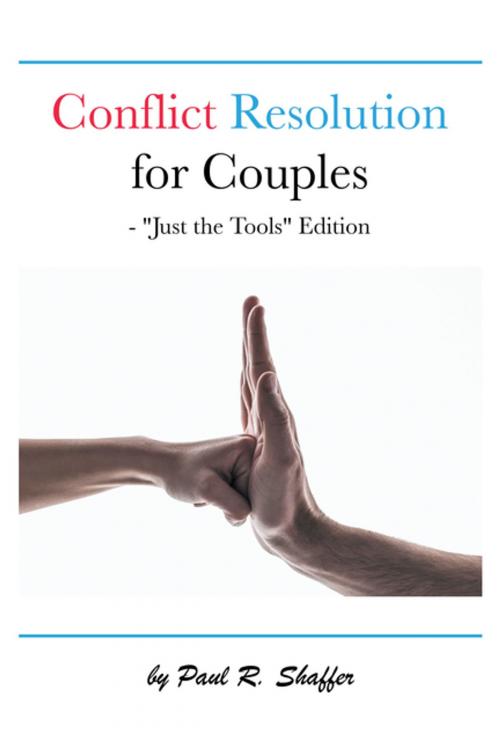Conflict Resolution for Couples
"Just the Tools" Edition
Nonfiction, Family & Relationships, Family Relationships, Divorce, Relationships, Marriage, Health & Well Being, Psychology| Author: | Paul R. Shaffer | ISBN: | 9781496936141 |
| Publisher: | AuthorHouse | Publication: | September 10, 2014 |
| Imprint: | AuthorHouse | Language: | English |
| Author: | Paul R. Shaffer |
| ISBN: | 9781496936141 |
| Publisher: | AuthorHouse |
| Publication: | September 10, 2014 |
| Imprint: | AuthorHouse |
| Language: | English |
The “Just the Tools” edition of “Conflict Resolution for Couples” is an abbreviated version of Paul Shaffer’s first book, “Conflict Resolution for Couples” - originally published in 2005, and then re-published in 2011. This leaner edition “cuts to the chase” of couple’s conflict resolution, without the foundational and special population sections that made the original book a much meatier but time-consuming work. “Just the Tools”, while a stand-alone title, also serves as a companion book to Paul’s “Top 10 Marriage Essentials” published in 2014 (and the “Top 10 Dating Essentials” projected for 2015). It retains the same comprehensive, easy-to-understand, and logical progression found in the original.
This book consists of essentially two parts:
Part I is about the tools for resolution. It presents a model for managing conflict and itemizes 26 guidelines (the ABC’s of conflict resolution) for identifying, validating, processing and resolving issues.
Part II discusses strategies for change. It focuses on initiating and maintaining change, understanding lack of change, and healthy routines to support lasting change.
The “Just the Tools” edition of “Conflict Resolution for Couples” is an abbreviated version of Paul Shaffer’s first book, “Conflict Resolution for Couples” - originally published in 2005, and then re-published in 2011. This leaner edition “cuts to the chase” of couple’s conflict resolution, without the foundational and special population sections that made the original book a much meatier but time-consuming work. “Just the Tools”, while a stand-alone title, also serves as a companion book to Paul’s “Top 10 Marriage Essentials” published in 2014 (and the “Top 10 Dating Essentials” projected for 2015). It retains the same comprehensive, easy-to-understand, and logical progression found in the original.
This book consists of essentially two parts:
Part I is about the tools for resolution. It presents a model for managing conflict and itemizes 26 guidelines (the ABC’s of conflict resolution) for identifying, validating, processing and resolving issues.
Part II discusses strategies for change. It focuses on initiating and maintaining change, understanding lack of change, and healthy routines to support lasting change.















